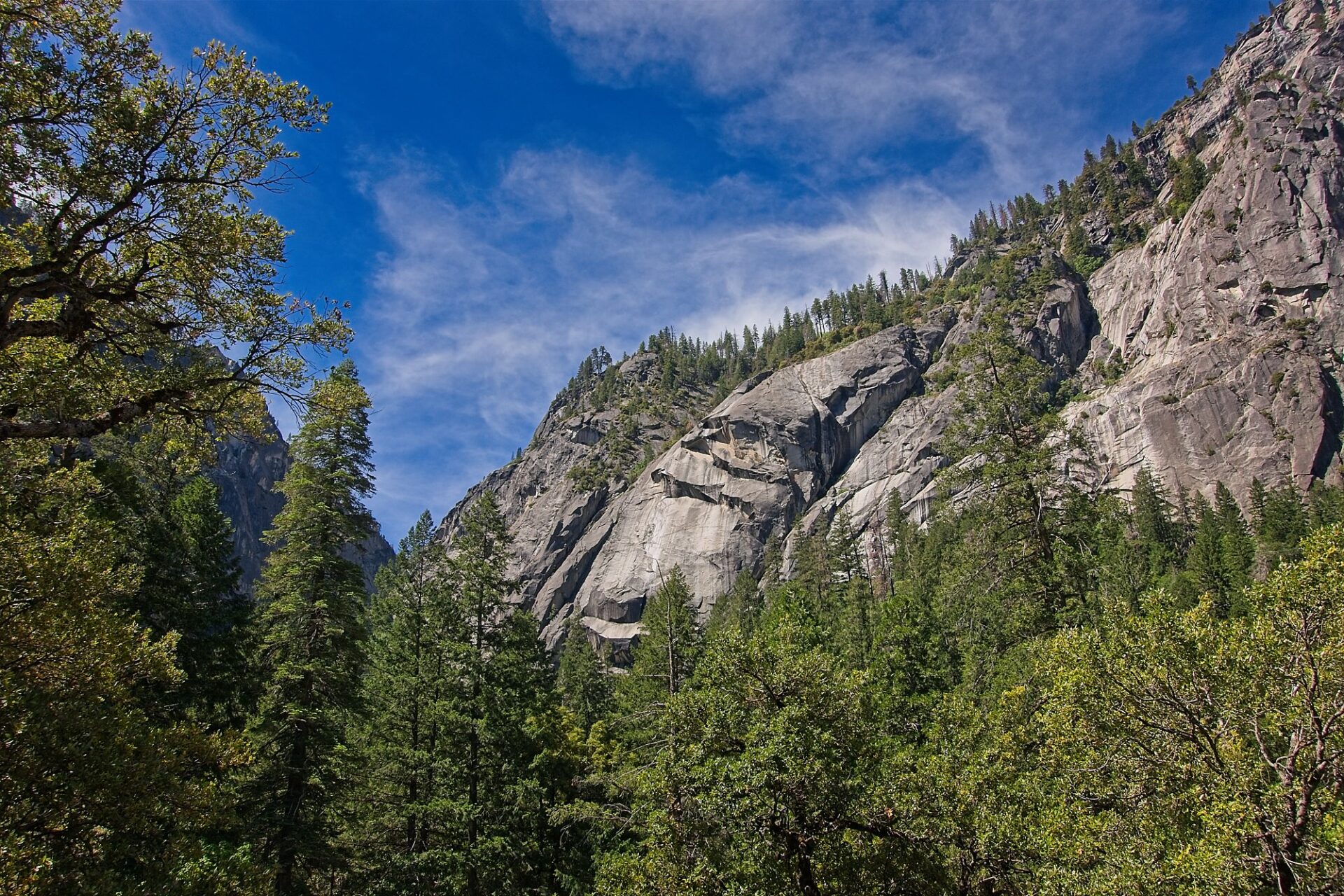
Yosemite National Park‘s dazzling waterfall hikes, serene meadows, and breathtaking viewpoints make it one of the most iconic U.S. national parks.
This guide aims to share why Yosemite is so unforgettable and to provide you with a manual for exploring Yosemite in 2 days.
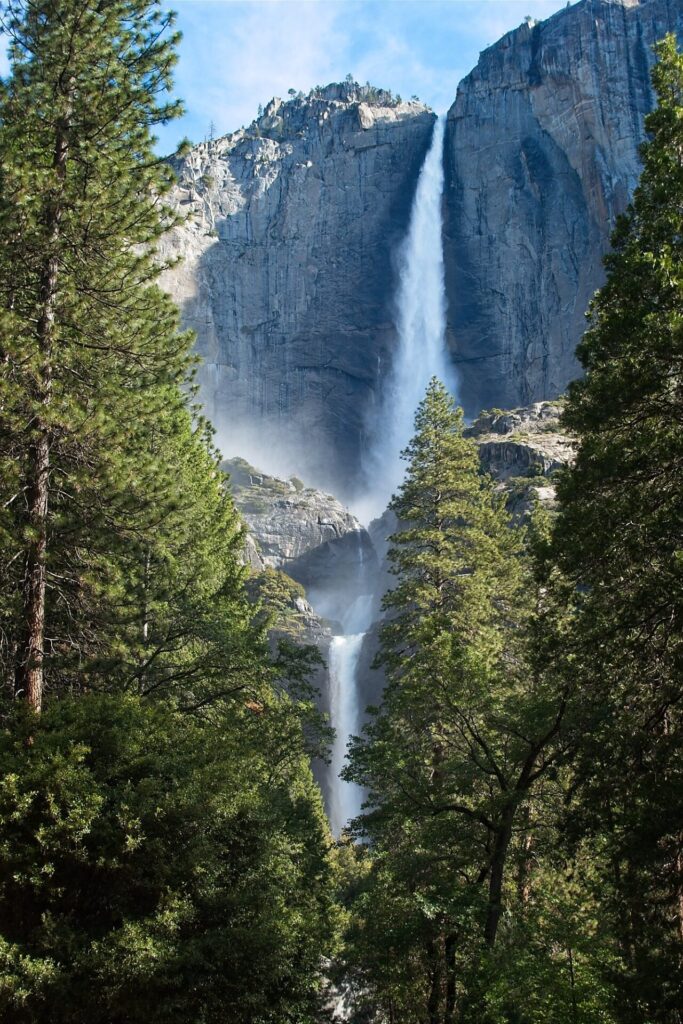
Hi there! I’m Cindy—an RVer and outdoor adventurer who visited Yosemite on a June Father’s Day weekend trip, aiming to pack in as much as possible into a short visit!
I LOVED my time in Yosemite! While I was there and before my arrival, I spent a considerable amount of time gathering information to ensure our trip was a smashing success.
👉 If you have only two days to experience Yosemite National Park, don’t worry! This guide is built from real experiences, not just Google searches or secondhand advice.
While I was there, I participated in a range of hikes, including many waterfall hikes, such as the Mist Trail, which offers views of Vernal and Nevada Falls. I also explored Yosemite Village and The Ahwahnee. That weekend was crowded, wet (thanks to peak waterfall season), and unforgettable!
Whether you’re planning your first visit or returning for a quick getaway, I’ve put together this guide to help you make the most of a two-day adventure in the park.
Below, you’ll find tips on how to beat the crowds, which trails are worth your time, how the shuttle system works, and the most scenic stops. Read on to start dreaming about your next Yosemite adventure!
Park Overview
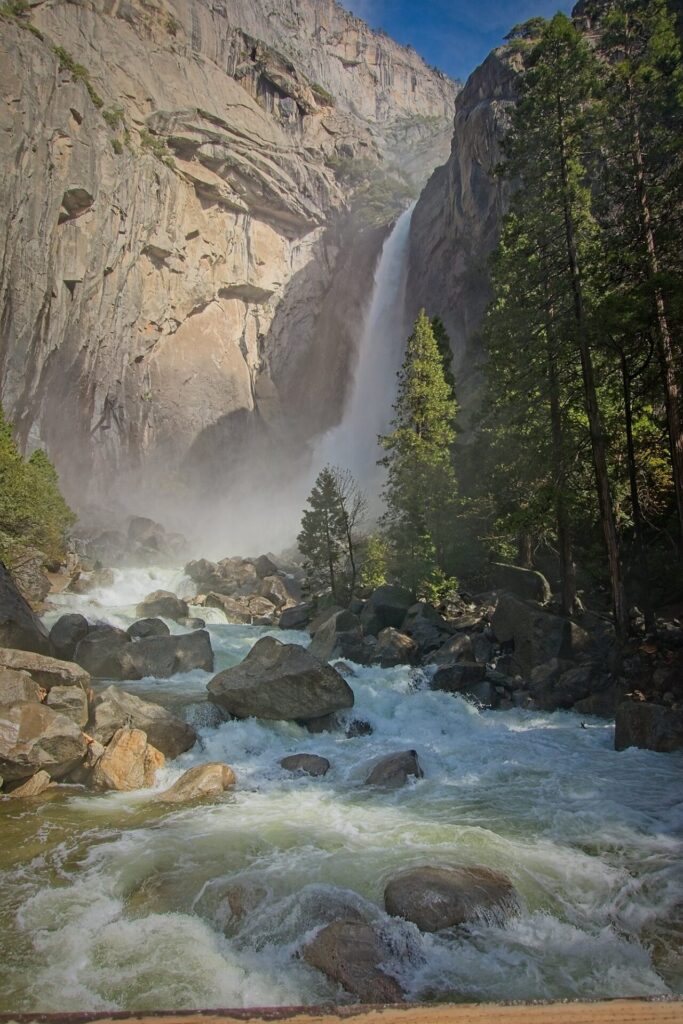
Yosemite is a park in the Sierra Nevada Mountains that spans over 750,000 acres of granite cliffs, waterfalls, giant sequoias, and alpine meadows.
The park’s most visited area, Yosemite Valley, contains the densest collection of iconic sights, including Half Dome, El Capitan, and Yosemite Falls.
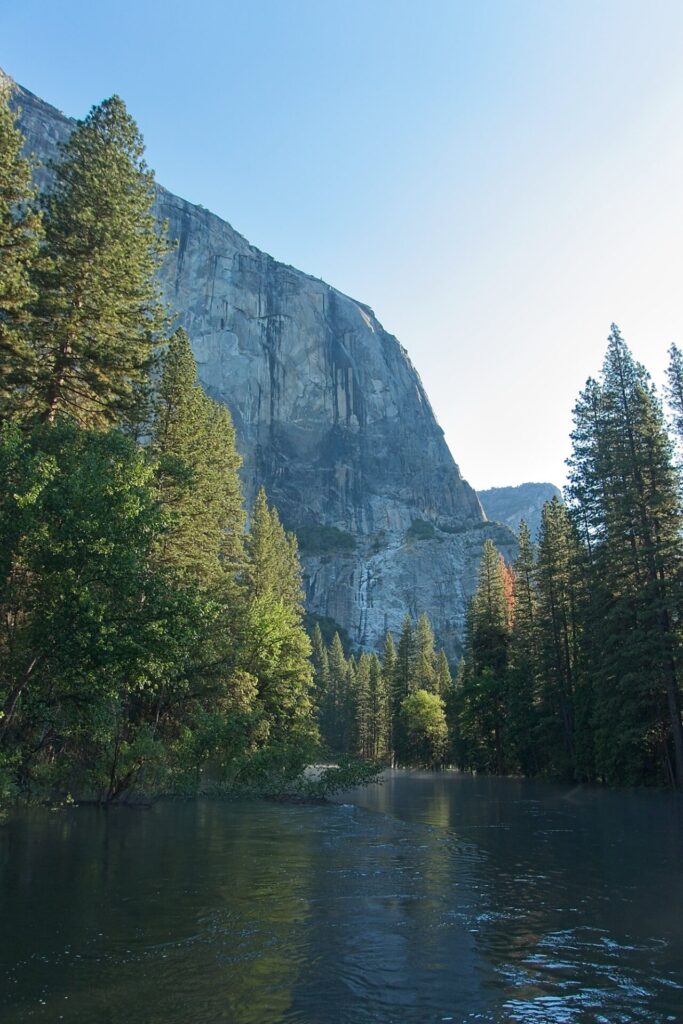
Yosemite National Park Fun Facts
- Over 4 million people visit Yosemite each year.
- It is home to 25 named waterfalls, many of which reach their peak in late spring.
- It contains more than 750 miles of trails.
Is Yosemite National Park Worth Visiting?
Yosemite National Park is absolutely worth visiting. Few places in the world rival Yosemite’s blend of accessible natural beauty and adventure.
Whether you’re a photographer, a hiker, or just someone who loves fresh air, it’s a great place to visit.
Best Time to Visit Yosemite
Here is some important information about the area’s weather, seasons, and closures:
Ideal Seasons:
From late May to early October, the most access to trails and roads in Yosemite is available. June is especially lovely, with rushing waterfalls and clear skies. I visited in June and loved it, but there was some flooding due to the park being at peak waterfall season.
Weather Considerations and Preparations:
The weather in Yosemite can shift quickly.
Mornings can be cold, afternoons tend to warm up, and occasional thunderstorms can pop up, making layering essential.
Are There Any Seasonal Road and Trail Closures to Note?
Glacier Point Road and Tioga Road are typically closed from late fall through late spring due to snow. Always check the National Park Service website for real-time updates.
Getting to Yosemite
Yosemite National Park is best accessed via car or the Yosemite Area Regional Transportation System.
Flying to Yosemite National Park
The closest major airport is Fresno Yosemite International Airport (FAT), approximately 2 hours and 30 minutes from the Yosemite Valley.
Other options include Sacramento International Airport (SMF) and Oakland International Airport (OAK), which are roughly 4 hours away from the Yosemite Valley, and San Francisco International Airport (SFO), which is 4 hours and 40 minutes away.
You will then need to rent a car to get to the park.
Driving to Yosemite National Park
Yosemite is accessible via multiple mountain highways, each offering different access points.
Highway 120 (Big Oak Flat Entrance) serves travelers coming from the Bay Area.
Highway 41 (South Entrance) is ideal for those driving up from Fresno or Southern California.
For reliable, year-round access and gentler grades, Highway 140 through El Portal is often the easiest option. It opens directly into the heart of Yosemite Valley.
Be prepared for winding roads and changing conditions, especially in winter.
Public Transportation to Yosemite National Park
The Yosemite Area Regional Transportation System (YARTS) offers bus service year-round along Highway 140. It expands routes on Highway 120 and Highway 41 during the summer months.
Once inside, the free Yosemite Valley Shuttle connects major lodges, trailheads, and scenic stops from 7 a.m. to 10 p.m.
What’s the Cost Associated with Visiting Yosemite National Park?
On popular days of the year, you’ll need an entrance reservation. You will need to book these online in advance, and they cost $2. Entrance fees upon arrival at the park are $35 per vehicle, valid for three consecutive days, or $20 for pedestrians or cyclists.
Motorcycles enter for $30, and annual park-specific passes ($70) or federal interagency annual passes ($80) cover Yosemite and hundreds of other parks. These fees support park maintenance, conservation, and visitor services.
I recommend purchasing the America the Beautiful Pass if you plan to hit several parks throughout the year. It’s only $80 and allows you to enter countless national parks.
Additionally, are there any reservations, permits, or important park policies that we should be aware of?
There are a few different park policies that are helpful to know.
🚗 During busy periods, typically from June 15 to August 15, holiday weekends, and peak hours (6 a.m.–2 p.m.), a reservation is required to drive into Yosemite Valley.
⛺️ Another essential bit of information to know in advance is that wilderness overnight stays, including Half Dome hikes with cables, require backcountry permits. Half Dome itself requires a special permit obtainable via lottery.
🐻 Last but certainly not least, food must be stored in bear-proof lockers or boxes; feeding wildlife, off-trail hiking, and improper food storage are strictly prohibited in the national park.
Utilizing the Yosemite Valley Shuttle System
If you’re visiting during popular vacation times, finding parking spots in this national park can get interesting.
Overview of Shuttle Routes
The shuttle is a great way to get around without parking stress. The Valleywide Shuttle loops through the valley, stopping at lodges, campgrounds, and trailheads every 10–20 minutes between 7 a.m. and 10 p.m.
The East Valley Shuttle runs more frequently (about every 10 minutes) between Yosemite Village, Curry Village, and eastern trailheads.
Efficient Planning with Shuttle Stops
To maximize your time, consider parking once and using the shuttle, especially on weekends or holidays.
I recommend looking at the park map online in advance and planning which shuttle you’ll be hopping on and which stop you’ll want to get off at first.
One of my biggest tips is to hit the big hikes first thing in the morning. This allows you to beat some of the crowds and the heat. It also frees up your afternoon to explore smaller trails leisurely, take in the views, and go with the flow.
Must-See Attractions:
These are the iconic spots you absolutely must see while at Yosemite:
Yosemite Valley
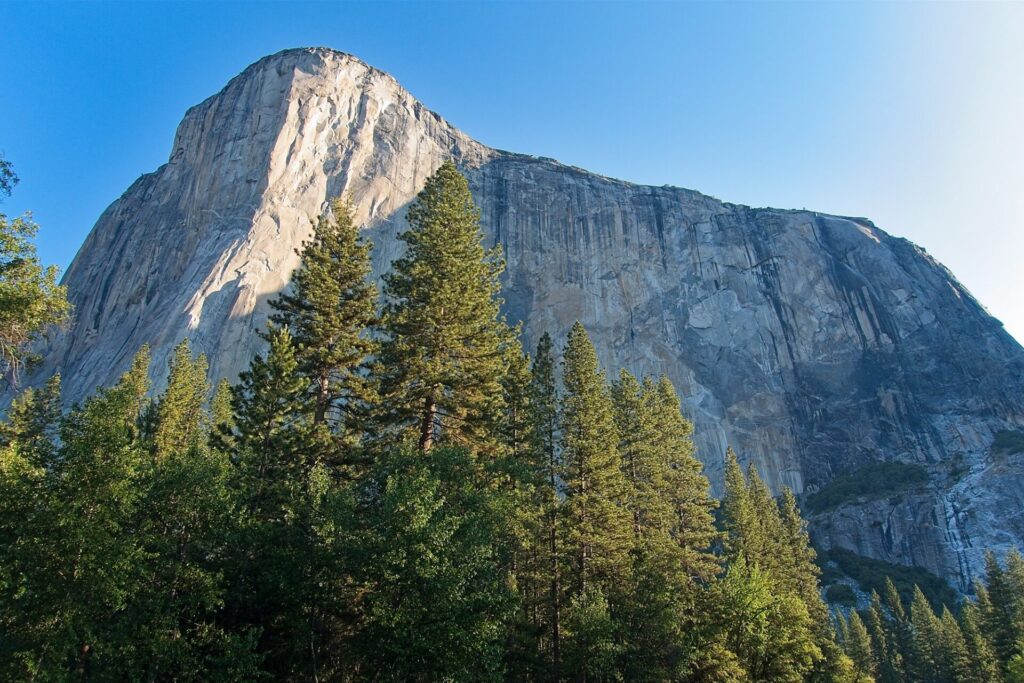
The park’s centerpiece offers jaw-dropping views of El Capitan, Half Dome, and meadows framed by towering granite cliffs.
Mist Trail to Vernal and Nevada Falls
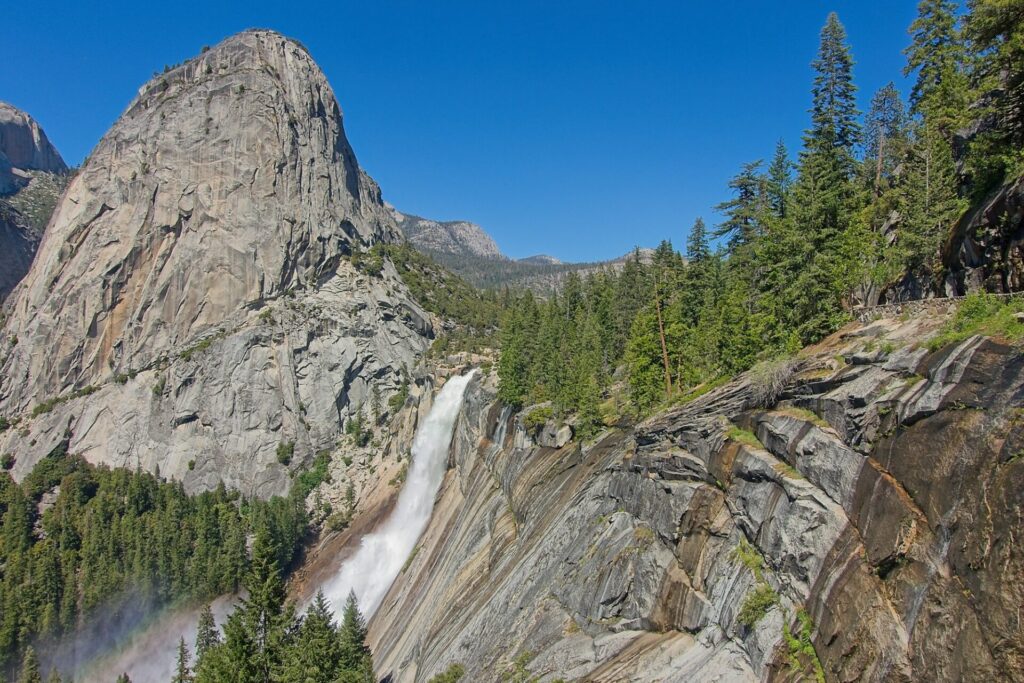
A classic, heart‑pumping hike through misty canyons. On this hike, expect to get soaked beneath the falls.
Tunnel View and Glacier Point
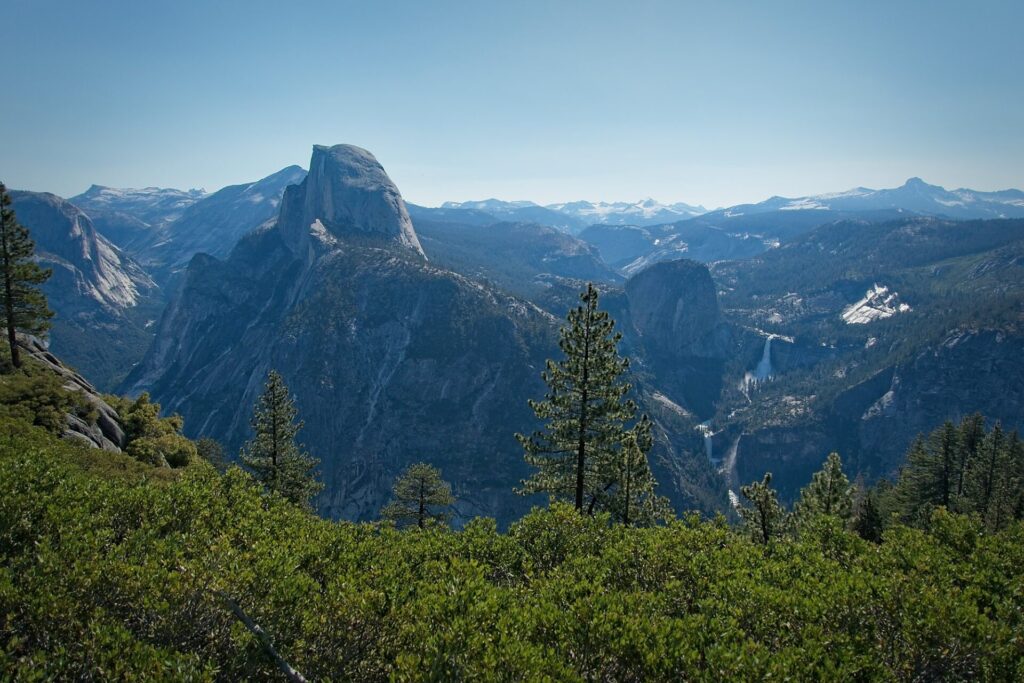
Unbeatable panoramas of the valley and its iconic monoliths are best enjoyed at sunrise or sunset.
Additional Noteworthy Sights
- Cook’s Meadow & Sentinel Meadow: A peaceful stroll with views of valley icons.
- Yosemite Village & Ansel Adams Gallery: History, art, and visitor resources in one place.
- Tioga Road (Highway 120): Stunning alpine views and access to Tuolumne Meadows (seasonal).
- Tenaya Lake & Olmsted Point: High‑country landscapes accessible mid‑summer.
- Lembert Dome: A rewarding climb near Tuolumne Meadows.
- Hetch Hetchy Reservoir: A quieter alternative to Yosemite Valley with hikes and waterfalls.
- Firefall (seasonal): Around late February, Horsetail Fall appears to glow like fire thanks to the way sunlight hits the waterfalls. It’s incredible, and visitors rave about how wild it looks!
Yosemite National Park Itinerary:
Here is a recommended itinerary for a two-day visit to Yosemite National Park:
Suggested Day One Itinerary for Yosemite National Park
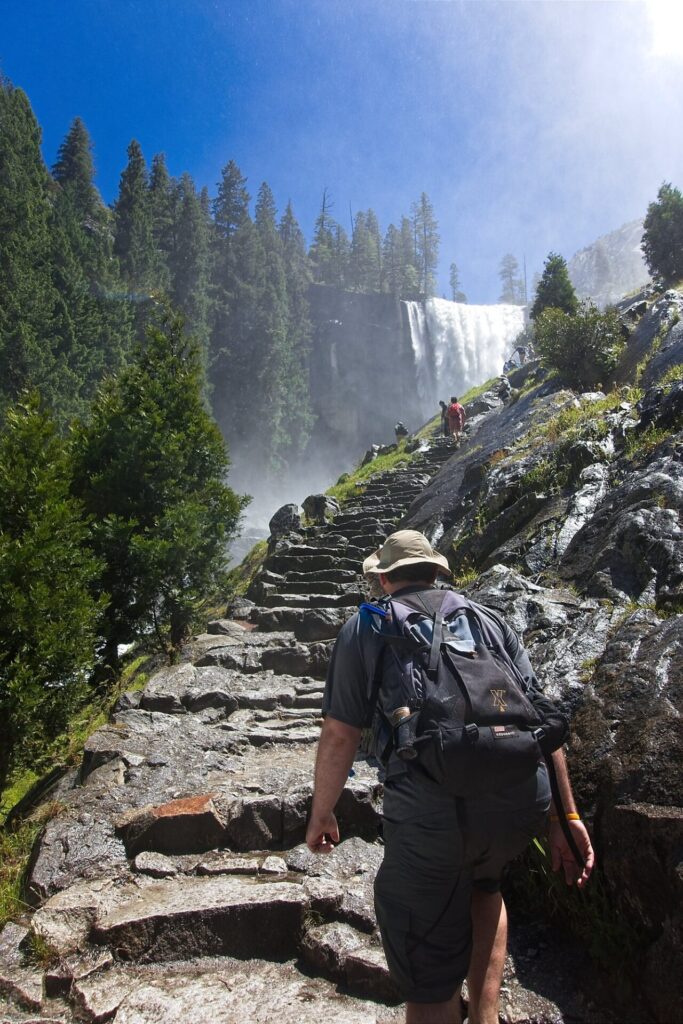
Begin early with the Mist Trail to Vernal and Nevada Falls.
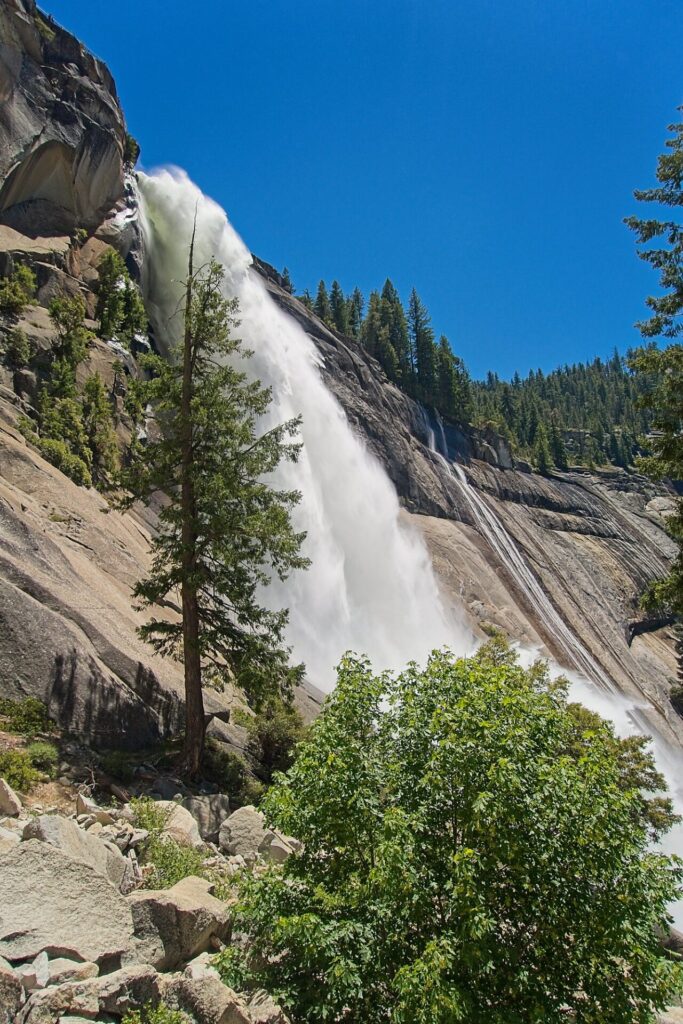
Then, head on over to Yosemite Village and the Ansel Adams Gallery.
Lastly, spend the golden hour, dusk, and sunset at either Tunnel View or Glacier Point.
Suggested Day Two Itinerary for Yosemite National Park
If you’re more of a sunrise person, get up early and catch the sunrise at Tunnel View.
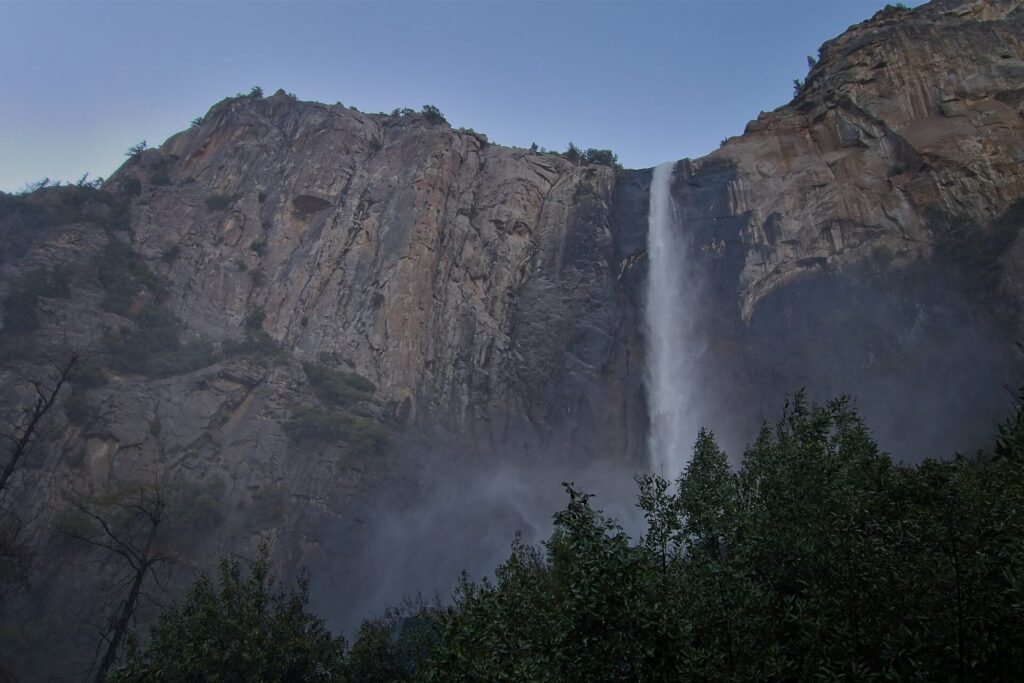
Then, start with a calm morning at Bridalveil Fall and a walk around Mirror Lake.
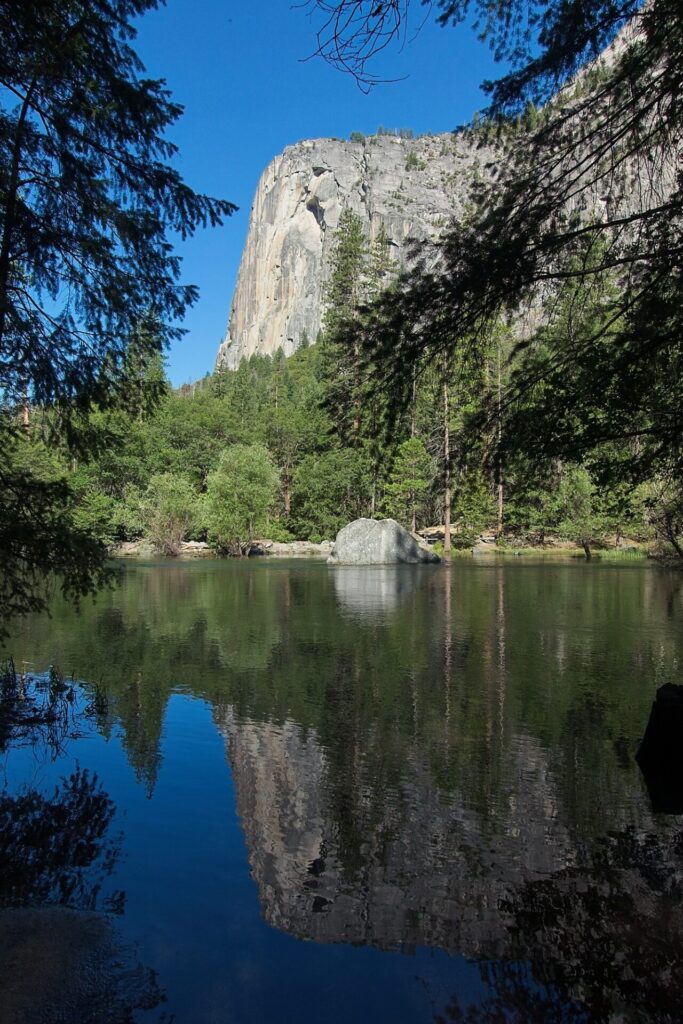
Next, either enjoy a scenic lunch at The Ahwahnee or pack a lunch and bring it along on the next hike.
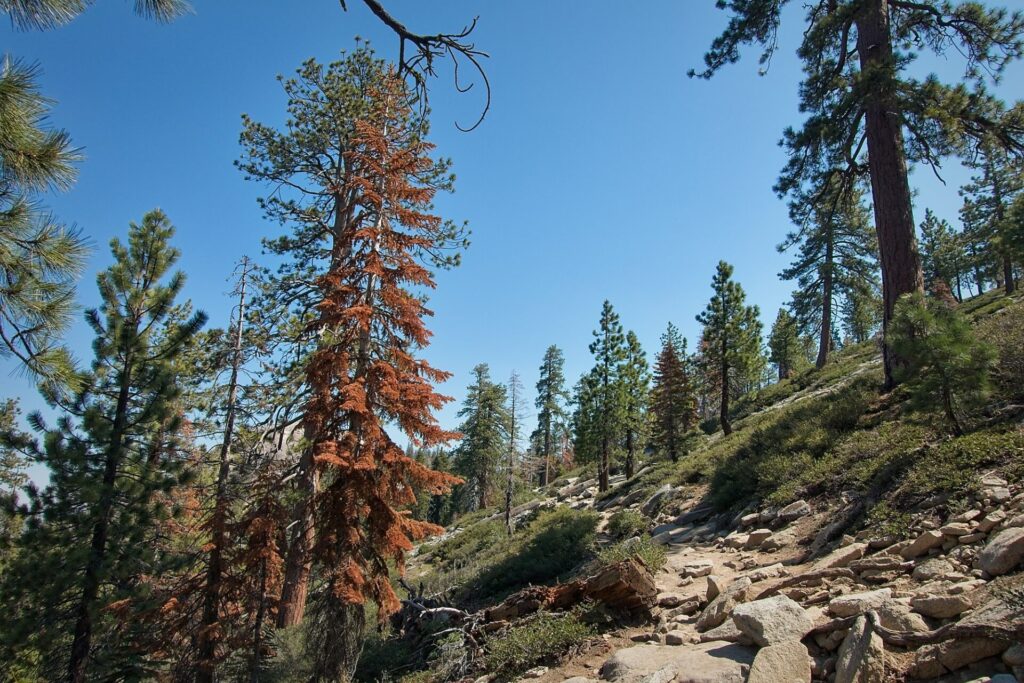
In the afternoon, hike the Sentinel Dome and Taft Point Loop.
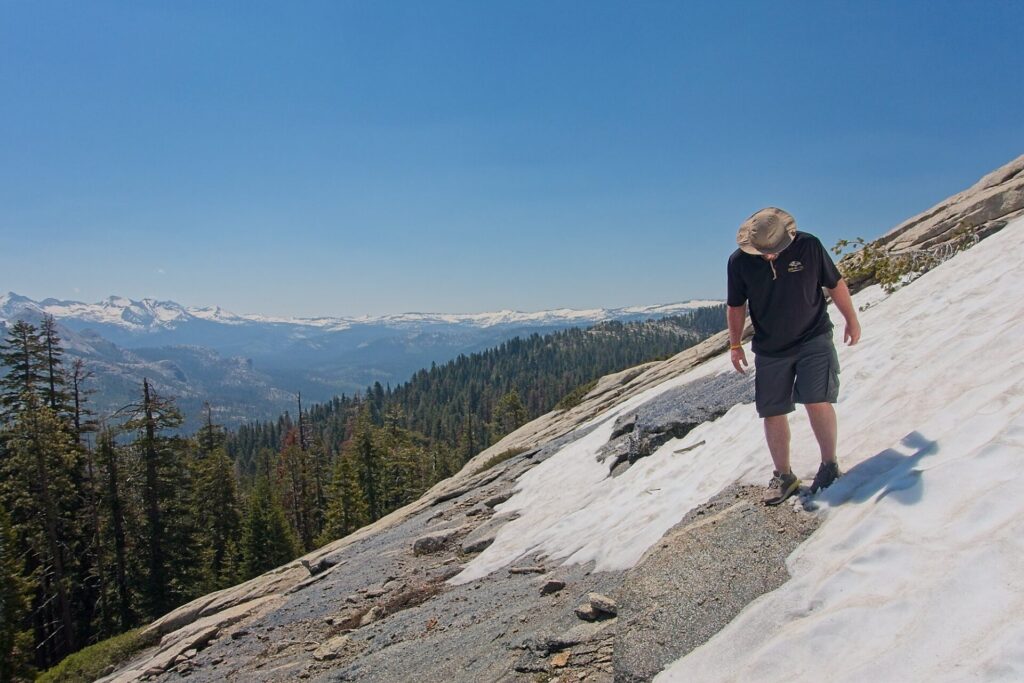
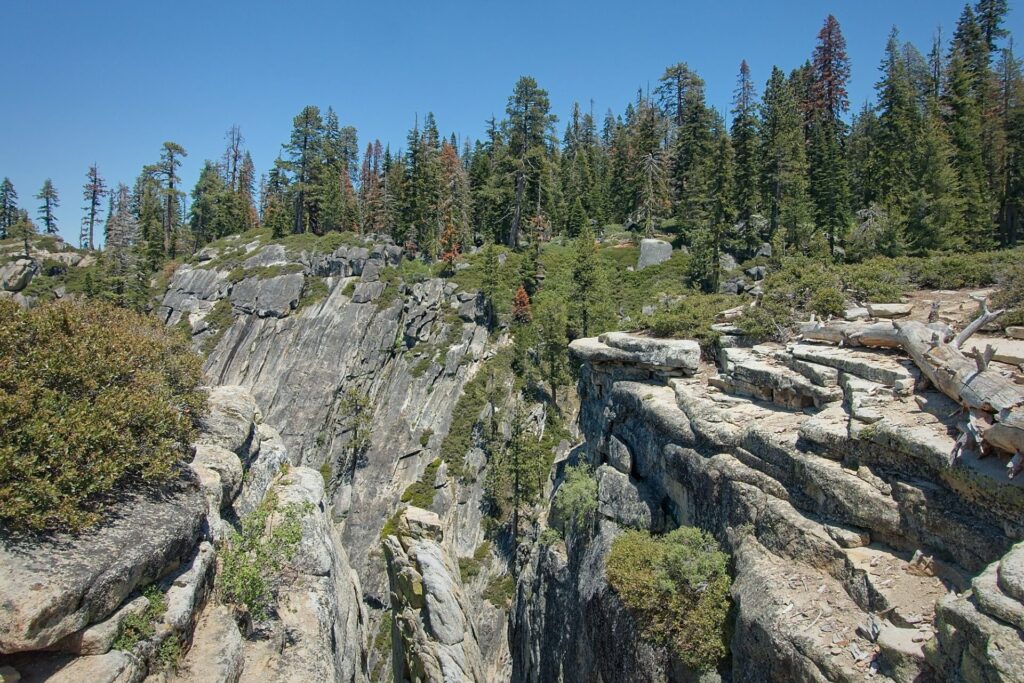
Finish your trip with a peaceful stop at Wildcat Falls and The Cascades before heading out.
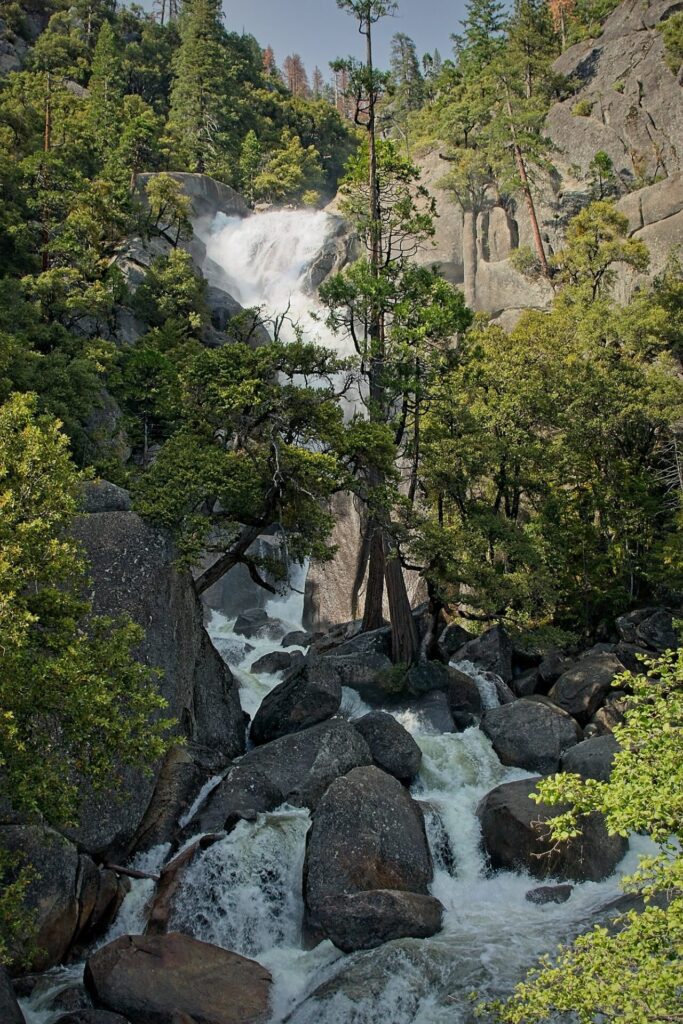
Yosemite Photography Spots
Yosemite is a dream destination for photographers, with golden light and iconic backdrops around every corner.
Tunnel View is one of the best places to catch sunrise, where the first light spills over El Capitan and Half Dome. I started my GoPro here one morning, and it was worth it alone for the dramatic reveal of the valley.
Glacier Point is hard to beat for sunset.
The Mist Trail offers up-close shots of rushing waterfalls, but be prepared for mist to appear on your lens.
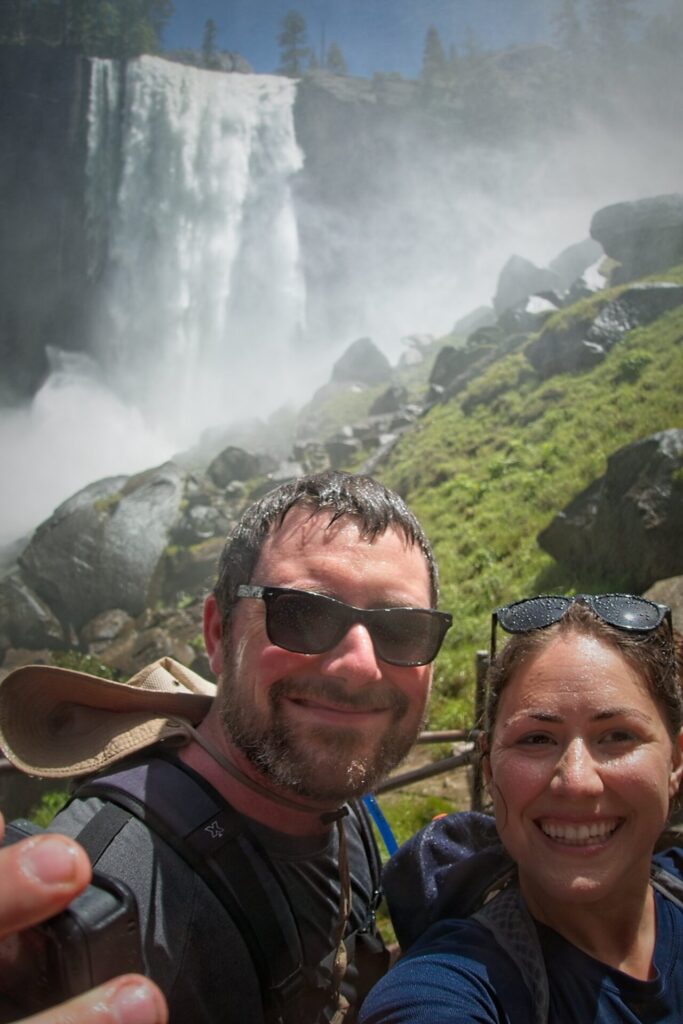
If you’re brave enough to inch close to the edge, Taft Point delivers heart-pounding cliffside shots with panoramic views of the valley floor below.
Yosemite Family Activities
Yosemite offers plenty of family-friendly fun even if you’re not planning to tackle major hikes. Short walks, such as those to Lower Yosemite Fall and Mirror Lake, are great for all ages, offering beautiful views with minimal effort.
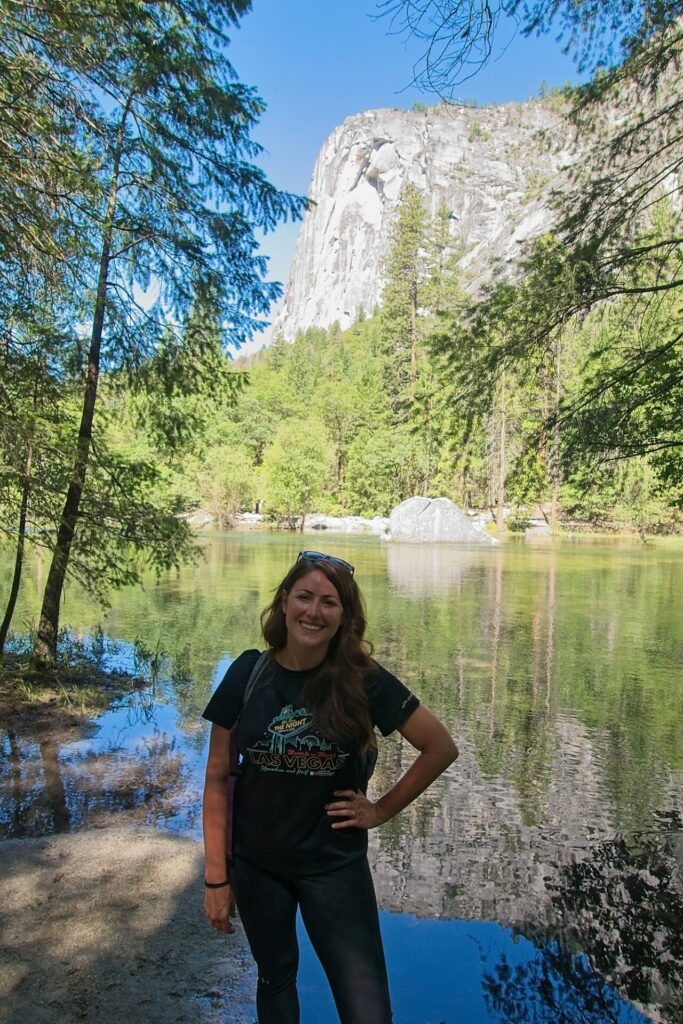
We hit Mirror Lake around 8:50 a.m. on Father’s Day and had a peaceful moment before crowds arrived.
The Valley Visitor Center features educational exhibits, and kids especially enjoy the Junior Ranger Program.
In summer, you can also spend time tubing or wading in the Merced River. There’s something magical about relaxing by the water after a full morning of exploring.
Yosemite Pet Policies
While Yosemite isn’t the most pet-friendly park when it comes to trails, you can still bring your dog to enjoy developed areas and paved roads.
Pets must be leashed at all times and aren’t allowed on unpaved trails, shuttle buses, or in the wilderness.
Campgrounds like North Pines and picnic areas are pet-accessible, as are paved paths.
Things to Do Near Yosemite National Park
- Highway 49 – The Gold Country: Explore historic towns like Mariposa, Groveland, and Sonora with museums, shops, and Old West charm.
- Sierra National Forest: Great for hiking, fishing, and dispersed camping just outside the park.
- Local Wineries: Enjoy wine tasting in Mariposa or Oakhurst.
- Farm-to-Table Dining: Try local eateries offering Sierra Nevada-grown produce and meats.
- Bass Lake (near Oakhurst): Boating, kayaking, and lakeside relaxing.
- Don Pedro Lake or Lake McClure: Popular for swimming, fishing, and RV camping.
- Caverns: Moaning Cavern and Mercer Caverns offer underground adventures nearby.
- Railtown 1897 State Historic Park: See historic trains and movie memorabilia in Jamestown.
- Yosemite Mountain Sugar Pine Railroad: Ride a steam train through the forest (great for families).
Tours
Taking a tour in Yosemite National Park offers expert insights, stress-free access to iconic and hidden spots, and better chances to see wildlife—all without the hassle of navigating on your own. It’s a smart, eco-friendly way to make the most of your visit, especially if you’re short on time or new to exploring the outdoors.
Internal Yosemite National Park Tours
Authorized Concessioner Aramark operates four tours within the National Park. These tours are a great way to learn about the park from experts.
Discover more about the tours and book them online here.
Viator Tours
GetYourGuide Tours
Where to Stay in Yosemite National Park
It’s important to note that reservations are required for all campgrounds from April through October. They are super hard to obtain and must be booked well in advance. Fortunately, there are 13 different campgrounds throughout the park.
Yosemite RV Camping
Ten campgrounds in Yosemite allow RVs and trailers. It’s also worth noting that electrical, water, and sewer hookups are not available in the park; however, there are a few dump stations.
The campgrounds that RVs can go to include Upper Pines, Lower Pines, North Pines, Wawona, Bridalveil Creek, Hodgdon Meadow, Crane Flat, White Wolf, Porcupine Flat, and Tuolumne Meadows.
I recommend checking out the National Park Service website for details about the number of sites, how early you can book them in advance, and what size RV fits.
Yosemite Car Camping
There are countless campgrounds for car camping in the park, all of which require reservations.
However, three offer first-come, first-served spots in the late fall, winter, and early spring.
I recommend checking the National Park Service website for more up-to-date information on securing these spots on a first-come, first-served basis, as well as looking into reservations, conditions, and other details.
Lodging
There are many different hotels, lodges, and camps throughout the park.
The most notable hotels include The Ahwahnee, renowned for its luxurious accommodations and central location; the Yosemite Valley Lodge, a traditional mountain lodge situated at the base of Yosemite Falls; and the Wawona Hotel, a historic lodge located in the southern part of the park.
Places to Stay near Yosemite National Park
If you’re not staying inside the park, there are great options nearby:
RV Camping
One of the best places to stay with an RV is the Yosemite RV Resort, which offers amenities such as a pool, cabins, a dog park, laundry facilities, and more.
Another ideally located option is Indian Flat RV Park.
Car Camping
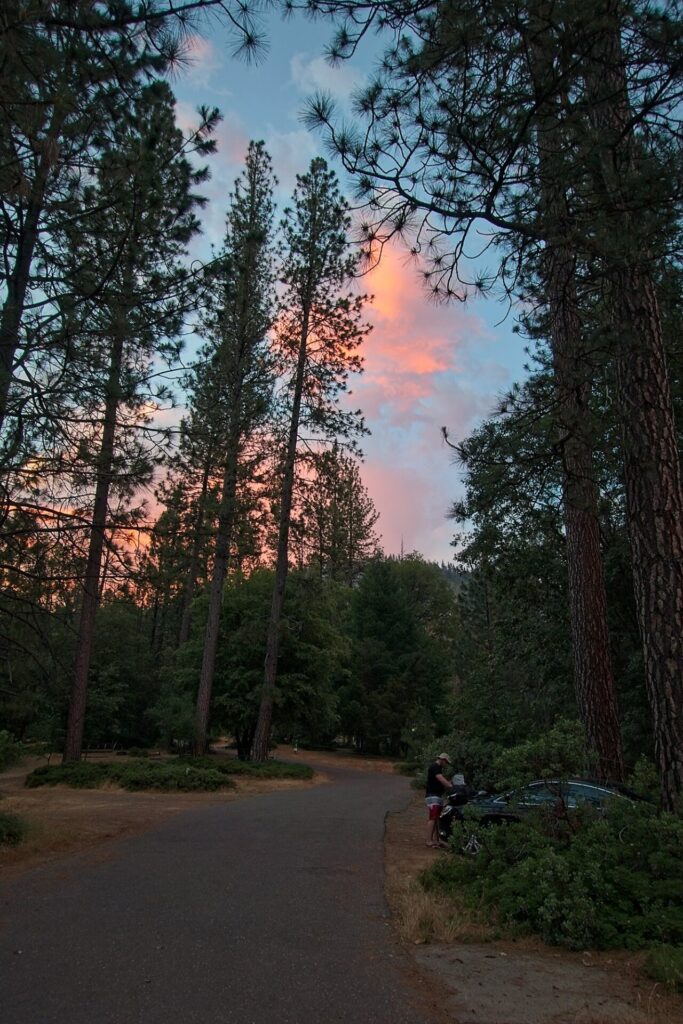
While we were there, we booked a public hillside tent site at Yosemite Lakes RV Resort, which was peaceful and well-located.
Dispersed Camping
One of my go-to methods for finding dispersed camping is the Dyrt.
Goat Meadow is a popular spot near Yosemite.
Hotels
One of the best hotels outside the park is the Evergreen Lodge at Yosemite, recognized for its exceptional service, family-friendly atmosphere, and prime location.
Vacation Homes/Cabins
VRBO lists many different vacation homes and cabins near Yosemite. You can check them out here!
Dining and Refreshment Options
Dining inside the park is limited, but the experience is memorable.
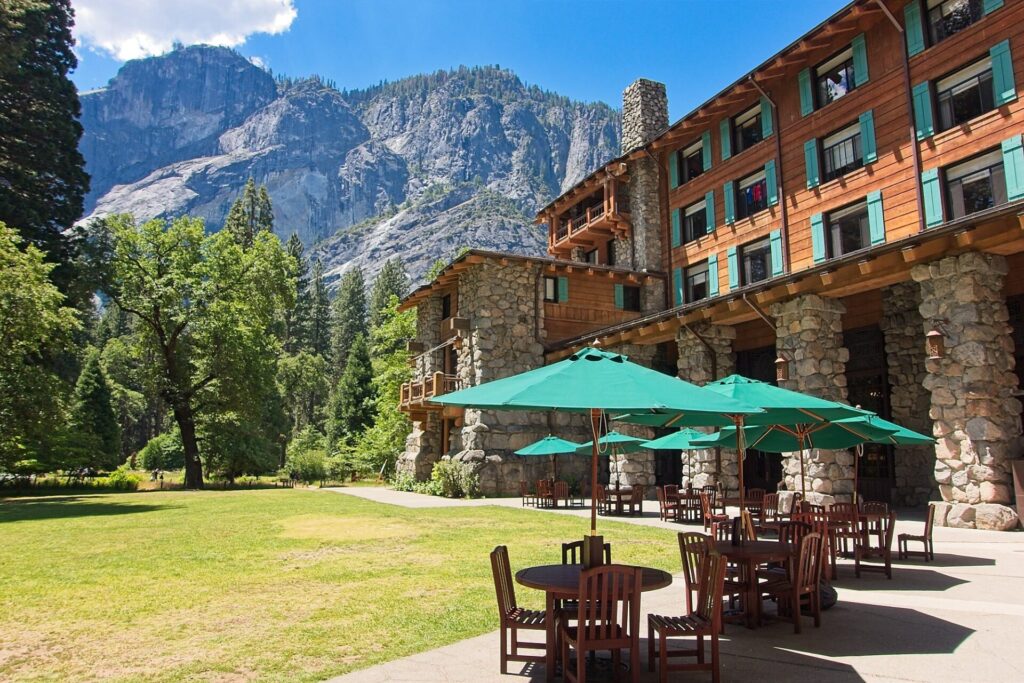
Dining in The Ahwahnee Dining Room is known for evoking a sense of stepping into a lodge from another era, with its high ceilings, warm lighting, and stunning mountain views.
Degnan’s Kitchen in Yosemite Village offers casual eats, including sandwiches, coffee, and trail snacks.
📋 Tip: I’d recommend packing a cooler or prepping simple meals ahead of time. The lines at these restaurants can get LONG on busy days, and it’s great to have grab-and-go options if you’re hitting multiple trails in a day.
Things to Take to Yosemite
Here are some top recommendations of items to take into the park with you:
Clothing and Footwear Recommendations
Layered clothing is a must because mornings can be chilly! I was sipping coffee by the Visitor Center before 8 a.m. and needed a jacket, but afternoons heat up quickly.
Sturdy hiking boots or shoes with grip are crucial for footwear, especially in slick areas like the Mist Trail, where we were totally soaked by the time we reached the top of Vernal Fall.
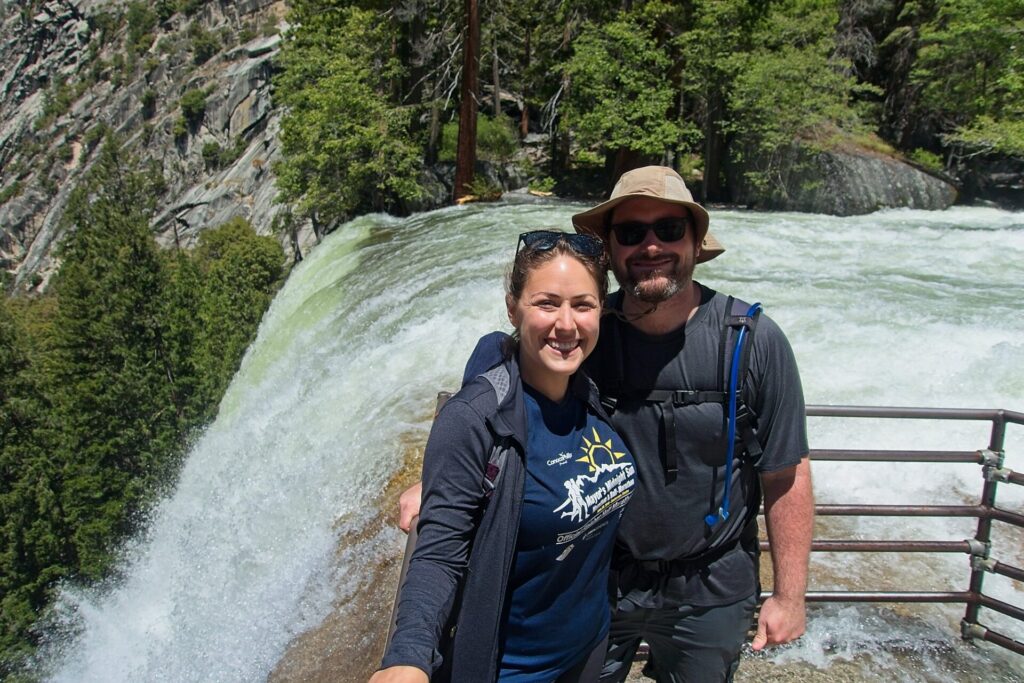
Necessary Hiking Gear
Don’t forget a daypack, plenty of water, and sun protection. Bonus points if you bring a compact camera or GoPro to capture the trails and waterfalls.
Weather-Related Gear
Thunderstorms can roll in unexpectedly, so be sure to pack a lightweight rain jacket.
Tips for a Successful Visit
These tips are sure to make your visit a great one:
Understand Transportation Options within the Park
Yosemite is huge, and parking fills up fast, especially in Yosemite Valley. The free shuttle system is a great way to get around without worrying about traffic or finding a spot.
Just be aware that the buses can be slow and crowded on busy weekends (like Father’s Day when we visited). If you plan to use the shuttle, start early or allow extra time to avoid frustration.
Plan Meals and Dining Options
Dining options in the park are limited and can get expensive or busy during peak hours. If you want a sit-down experience, places like The Ahwahnee Dining Room are a treat and should be reserved in advance.
We packed snacks and simple lunches in a cooler to eat on the go and avoid long lines. Having your own food gives you more flexibility, especially if you’re deep in the park or on a long trail.
Consider Guided Tours for In-Depth Exploration
Whether a tram tour through the valley or a ranger-led hike, guided tours offer insights you’d probably miss on your own. They’re invaluable if it’s your first visit or if you’re traveling with kids or older family members.
These tours often fill up fast, so it’s worth checking availability and booking ahead of time if something interests you.
Stay Connected with Mobile Resources and Apps
Cell service is spotty throughout the park, so download trail maps, shuttle routes, and offline resources before you arrive.
The National Park Service app is super helpful, as are apps like AllTrails if you’re planning hikes. We lost service just a few minutes past the gate, so having everything saved made navigating much smoother.
Practice Leave No Trace Principles for Conservation
Yosemite is stunning, and preserving its beauty requires the collective efforts of everyone.
Stick to marked trails, pack out everything you bring (including food scraps), and never feed wildlife. Bear boxes are there for a reason; use them. During our trip, we saw a few partially underwater from the spring melt, reminding us how wild and unpredictable this place is.
FAQs
Here are answers to some questions I’ve been asked about Yosemite National Park:
Is two days enough for Yosemite?
Two days is enough time for Yosemite, but you’ll likely want to return to experience more and enjoy even more of the park’s trails.
How many days do people spend in Yosemite?
Most visitors spend 2 to 5 days in Yosemite National Park.
Is it better to stay inside or outside Yosemite?
It is better to stay inside Yosemite because you’ll be closer to the trails, can experience sunrise and sunset, and won’t have to commute to and from the park.
What can you do in Yosemite that isn’t hiking?
You can do many things in Yosemite that don’t require hiking. You can explore Yosemite Village, visit the Ansel Adams Gallery, drive to scenic viewpoints, enjoy meals, or relax by the Merced River. In winter, there’s also snowshoeing and ice skating.
Can you see waterfalls in Yosemite without hiking?
Yes, you can see waterfalls in Yosemite without hiking.
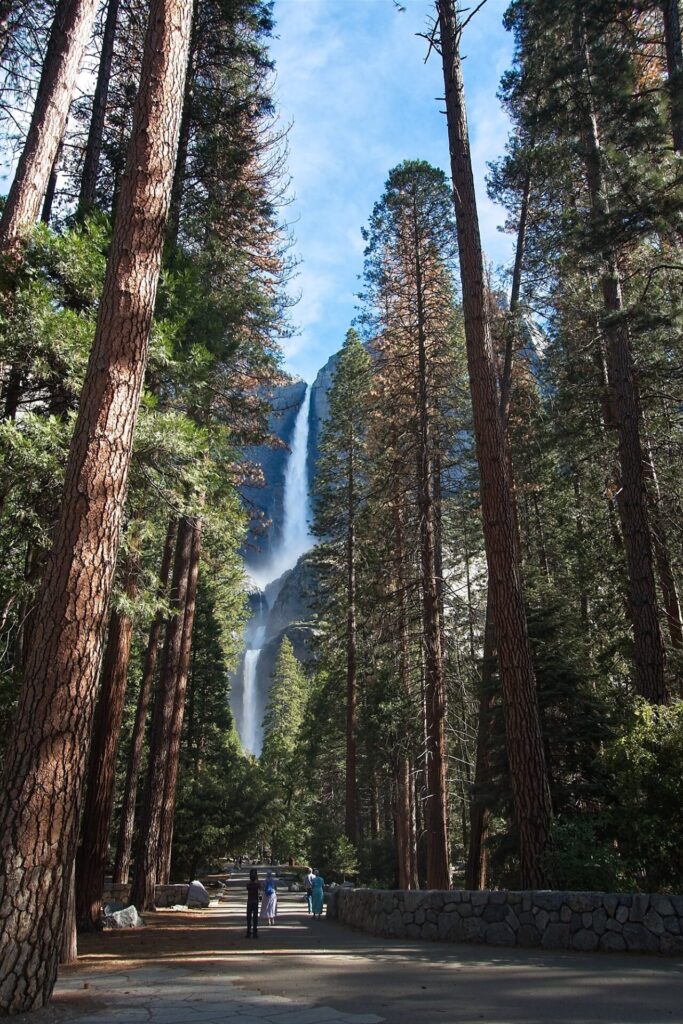
Bridalveil Fall and Lower Yosemite Fall are both viewable with short, mostly flat walks from nearby parking areas.
You can also catch great waterfall views from Tunnel View and Glacier Point without hitting a trail.
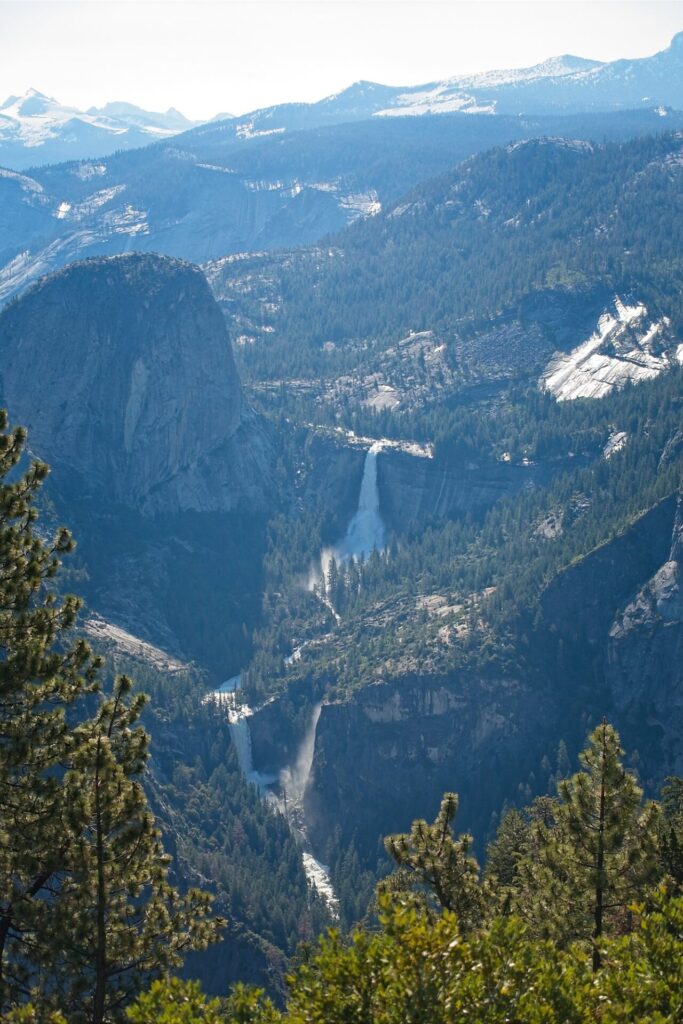
What not to do in Yosemite?
This probably sounds a bit obvious, but you should not feed wildlife, leave food in your car, or venture off marked trails in Yosemite.
Avoid arriving late during peak season, as parking fills up quickly.
Never underestimate the terrain, as accidents can happen when people aren’t prepared.
Last but certainly not least, don’t litter or leave the trail worse than when you first found it.
Do you need bear spray to hike Yosemite?
No, bear spray is not allowed or needed in Yosemite.
Instead, food should be adequately stored in bear boxes or lockers and follow park regulations. Black bears here are considered curious and not aggressive.
Do people get altitude sickness at Yosemite?
It’s rare to get altitude sickness in Yosemite Valley. However, some higher points in the park, such as Glacier Point, can lead to altitude sickness for some visitors.
If you’re sensitive to altitude, take it slow, stay hydrated, and rest as needed.
Is Yosemite really worth it?
Yosemite is absolutely worth visiting. It is one of the most iconic national parks in the U.S. for good reason: its waterfalls, granite cliffs, meadows, hiking trails, and wilderness areas leave a lasting impression on every visitor.
Are mosquitoes bad in Yosemite?
Mosquitoes can be a nuisance in Yosemite, particularly in late spring and summer, near areas with standing water and meadows.
If you’re visiting in June, July, or August, be sure to bring bug spray and wear long-sleeved clothing to protect yourself from the bugs.
What is the best time to drive into Yosemite?
The best time to drive into Yosemite is early in the morning, ideally before 8:00 a.m. You’ll avoid traffic, snag better parking, and enjoy cooler temperatures for exploring.
What can you do in Yosemite without a reservation?
You can drive into the park during non-peak hours, before 6 a.m. or after 2 p.m., without a reservation during peak season, explore public areas like Yosemite Valley, visit scenic overlooks, and use the shuttle system. Just avoid restricted areas that require permits or reservations.
What to do in Yosemite for 2 days?
If you have two days in Yosemite, start by hiking the Mist Trail to Vernal and Nevada Falls, then spend some time exploring Yosemite Village before ending your day with sunset views from Glacier Point. On day two, visit Bridalveil Fall early, take a peaceful stroll around Mirror Lake, enjoy lunch at The Ahwahnee, and cap off your trip with a scenic hike to Sentinel Dome, Taft Point, and the Fissures.
What is the busiest month to visit Yosemite?
July is typically the busiest month to visit Yosemite, followed closely by June and August. Expect full parking lots, crowded trails, and shuttle delays, especially on weekends.
Where should I stay if I’m going to Yosemite?
The best place to stay when visiting Yosemite is inside the park. Try Yosemite Valley Lodge or a reserved campsite. If staying outside, look at Groveland, El Portal, or Yosemite Lakes RV Resort for nearby access.
How long do people spend at Yosemite?
Most visitors stay 2 to 5 days, but you could easily spend a week exploring different areas.
If you’re short on time, two full days can still give you an excellent overview.
Where to start in Yosemite?
Start at Yosemite Valley. It’s the heart of the park and home to iconic sights like El Capitan, Yosemite Falls, Half Dome, and the Mist Trail. It’s also where most shuttle routes begin.
Are there shuttles in Yosemite?
Yes, there are shuttles in Yosemite.
The free Yosemite Valley Shuttle operates year-round, stopping at major trailheads and visitor facilities. It’s the easiest way to get around during busy months.
Can you drive through Yosemite in a day?
You can drive through Yosemite in a day, but it’s rushed. A one-day drive will let you stop at Tunnel View and Glacier Point (if open) and maybe see Yosemite Falls, but you won’t have time for hiking or exploring in depth.
What time is best to go to Yosemite?
The best time to visit Yosemite is from late May through early October. This window offers the most reliable access to trails, roads like Tioga and Glacier Point, and peak waterfall flow.
Which entrance is better for Yosemite?
The best entrance to Yosemite is El Portal (Highway 140). It’s the most reliable year-round entrance, with a gentler grade that’s easier for RVs and less prone to closures due to weather or rockslides. Plus, it brings you to Yosemite Valley, with beautiful views along the Merced River.
Can I just go to Yosemite without a reservation?
You can sometimes go to Yosemite without a reservation.
During peak season, a reservation is required if you arrive between 6 a.m. and 2 p.m. However, you can enter before or after those hours without one, and during the shoulder and off-season periods.
Check the National Park Service site for current rules.
How do you avoid crowds at Yosemite?
To avoid crowds at Yosemite, consider arriving early, visiting midweek, exploring lesser-known areas (such as Hetch Hetchy or Tuolumne Meadows), and avoiding peak months if possible.
An early start can make a big difference, even on a holiday weekend. I personally learned that Father’s Day in the park can bring hefty crowds, so keep that in mind as well.
Conclusion: How to Make the Most of Yosemite in 2 Days
Yosemite is one of those places that truly lives up to the hype. Even in the middle of a jam-packed holiday weekend, I left feeling amazed by what we could see and do in just two to three days.
From misty waterfall hikes to quiet meadow strolls and jaw-dropping viewpoints, this park truly is one of the most stunning national parks in the United States.
If you’re short on time, don’t stress; this two-day itinerary gives you a solid taste of what makes Yosemite so iconic.
Plan ahead, get an early start, and be ready to go with the flow (especially when it comes to parking and crowds). With a bit of preparation and the right mindset, you’ll leave already thinking about your next trip back, just like I was!
You May Also Enjoy:
👉 A Complete Acadia National Park Itinerary for Every Traveler
👉 The Ultimate One Day Badlands National Park Road Trip Itinerary
👉 A Smoky Mountains Itinerary for Every Type of Traveler & Everything Else You Need to Know!
👉 Glacier National Park Itinerary Made Easy: What to See in 1 to 5 Days
👉 Zion in 1 Day: Itinerary, Must-See Sights & Travel Tips
- Appalachian Trail Hike Week 8: Roan Highlands, Rain, & Renewed Motivation - October 22, 2025
- Ultimate Guide: 60+ National Parks Gifts for Park Lovers of Every Age - October 11, 2025
- What It’s Like to Hike the Appalachian Trail: Week 7 on the AT - September 25, 2025

